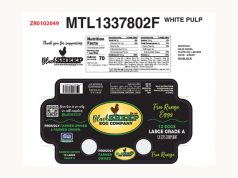The FDA says none of the contaminated shrimp has been released for sale
By I. Edwards HealthDay Reporter
MONDAY, Sept. 8, 2025 (HealthDay News) — U.S. officials are investigating radioactive contamination linked to frozen shrimp imported from Indonesia after testing found Cesium-137, a radioactive isotope, in some shipments.
The International Atomic Energy Agency (IAEA) said Friday that the contamination may have come from an industrial metal-melting facility at the same site as a shrimp processing plant in Serang, west of Jakarta.
“Preliminary information suggests that it may have originated from activities at a metal melting facility at the same industrial site or from the disposal of scrap metal junk to other areas of the site,” IAEA spokesperson Fredrik Dahl told The Associated Press in an email.
The company that exported the shrimp, PT Bahari Makmur Sejati (BMS Foods), has recalled more than 300 shipping containers of shrimp headed to the U.S., Dahl said.
The U.S. Food and Drug Administration (FDA) issued an import alert to block additional shipments from the company, The Associated Press said.
BMS Foods shipped about 12 million pounds of shrimp to U.S. ports in Los Angeles, Houston, Miami and Savannah in July and August, according to U.S. Customs and Border Protection records.
Last month, the FDA confirmed Cesium-137 in containers sent to four U.S. ports and in a sample of imported frozen shrimp. That discovery triggered multiple recalls of shrimp sold at Walmart, Kroger and other retailers.
This week, Tampa Maid Foods LLC, based in Florida, recalled more products, including breaded butterfly shrimp sold under the Admiral of the Fleet and Portico Seafood Classic labels.
The FDA says none of the contaminated shrimp has been released for sale. Still, it warned that long-term exposure to low levels of Cesium-137 could pose a “potential health concern.”
Testing showed that contaminated shrimp had about 68 becquerels of Cesium-137 per kilogram, well below the FDA’s safety limit of 1,200 becquerels per kilogram.
A becquerel is the unit for radioactivity.
Experts theorize that the contamination may have originated from recycled medical equipment that previously contained Cesium-137, which is used in devices to treat cancer and reduce blood contamination.
If not properly removed, the radioactive material can spread into the environment.
“If they get broken up in some sort of crushing mechanism, then all of a sudden, it’s basically a salt,” Steve Biegalski, a nuclear medicine expert at the Georgia Institute of Technology, told The Associated Press.
“It would be like you taking a giant salt shaker and spreading it all over the kitchen floor,” he explained.
The National Nuclear Security Administration has sent emergency teams on multiple deployments to “isolate and characterize the extent of Cesium-137 contamination,” according to the U.S. Energy Department.
“It needs to be tracked down, isolated and cleaned up,” Biegalski said.
More information
The U.S. Centers for Disease Control and Prevention has more on Cesium-137.
SOURCE: The Associated Press, Sept. 5, 2025
Copyright © 2025 HealthDay. All rights reserved.








